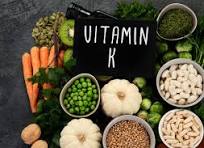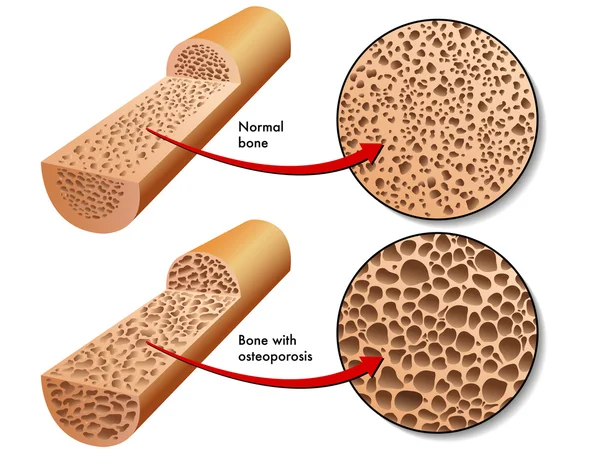
While almost all the water soluble vitamins especially of B complex category serve as precursors of coenzyme, vitamin K is the only fat soluble one with the coenzyme or enzyme helper function. Discovered by a Danish scientist, it is named after the danish word ‘koagulation’. The name signifies its role in blood clotting and wound healing. In the human body, vitamin K, also called phylloquinone, is essential for the formation and modification of clotting factors, without which a person can bleed to death.
Following are your check points to identify if you have vitamin K deficiency.
1. Easy bruising and heavy bleeds:
Do you often get scratches? Or do you bleed excessively even from minor cuts? Do small blood clot patches appear underneath your nails? These are one of the most crucial pointers to vitamin K deficiency. Phylloquinones have the responsibility of maintaining the normal levels of blood clotting factors 2,7,9,10 particularly their conversion to active forms. These factors are synthesized in the liver in zymogen forms and require vitamin K for post translational modification in the form of carboxylation of their glutamyl residue. Low levels of clotting factors prolong the clotting time and the person may bleed profusely. In women, heavy menstruation is also observed and in severe cases may require medical assistance. Such patients are prohibited from receiving surgical treatments as they are at risk of immense blood loss.

2. Prolonged antibiotic therapy:
Have you been taking antibiotics for a long period of time? Then you may be extremely vulnerable to phylloquinone deficiency. The cause of this condition is diminished flora of the intestine that normally serves to synthesize the vitamin K needed by the body. Avitaminosis occurs as the antibiotics kill the normal Flora. The reduced bacterial population can no longer synthesize enough phylloquinone and the amount of endogenously formed vitamins decreases leading to hypoprothrombinemia. Prolonged use of liquid paraffin also dissolves vitamin K and excretes it. Additionally, surgical removal of the intestine also leads to deficiency symptoms pertaining to the lack of flora. Such abnormalities require vitamin K supplementation to correct the bleeding tendency.

3. Infantile deficiency:
Does your newborn have bloody stool, bloody vomit, pale skin like symptoms? In newborns, the presence of a sterile intestine accounts for the lack of bacteria responsible for the function. The vitamin K deficient pregnant females may also transmit the consequences to the baby. As a result, newborns suffer severe bleeding from the cord. To prevent this, pregnant females are recommended vitamin K injection in their last trimester to avoid complications during labor. Also the babies are recommended an intramuscular dose of vitamin K once after birth to avoid hemorrhages since the dietary source of the infants, milk, can cover only one fifth of the total requirement.

4. Liver disease:
Have you been diagnosed with liver disease? Then it’s highly probable for you to develop Vitamin K deficiency. This compound being fat soluble is absorbed with chylomicrons and is transported with low-density lipoproteins (LDL) for storage in the liver. Prothrombin synthesis is decreased in patients with severe liver disease hence giving symptoms of the deficiency. The incidence of coagulopathy followed by cirrhosis is a debated issue and management generally includes administration of vitamin K given subcutaneously.

5. Poor bones, Osteoporosis:
Do you often experience lethargy, tiredness, cramps or muscle weakness etc.? Or have you been experiencing osteoporosis for quite some time? Then you may need vitamin K in your diet to fix your body issues as poor intake of this vitamin and high levels of uncarboxylated osteocalcin is associated with bone loss and vulnerability to fractures. Vitamin K has the role of carboxylation of glutamic acid residues of osteocalcin, the calcium binding protein of bones. This protein is secreted to perform its function of maintaining the bone health from the osteoblasts when insulin binds to osteoblasts in the presence of phylloquinone. Osteocalcin has also been reported to be involved in the regulation of glucose metabolism in pancreas and maintenance of muscle mass. Thus, the bone and flesh both require vitamin K for its upkeep.

Dietary sources:
Plant sources: Grass alfalfa, cabbage, cauliflower, tomatoes, spinach, potatoes, green leafy vegetables and soybean oils.
Animal sources: egg yolk, cheese, meat, liver, dairy products.




Recommended Daily Allowance:
50-100 micrograms/day. Nearly half of the requirement is met by endogenously formed vitamins. Oral administration of increased menadione can lead to toxicity and symptoms like hyperbilirubinemia, kernicterus and hemolysis may prevail.
THEODORE LEVITT
Excess doses of vitamin K may cause toxicity (due to increased breakdown of RBCs), hemolytic anemia, hyperbilirubinemia, jaundice, kernicterus and brain damage particularly in infants. Thus the check and balance between diminished and excess intake is a subject of concern.